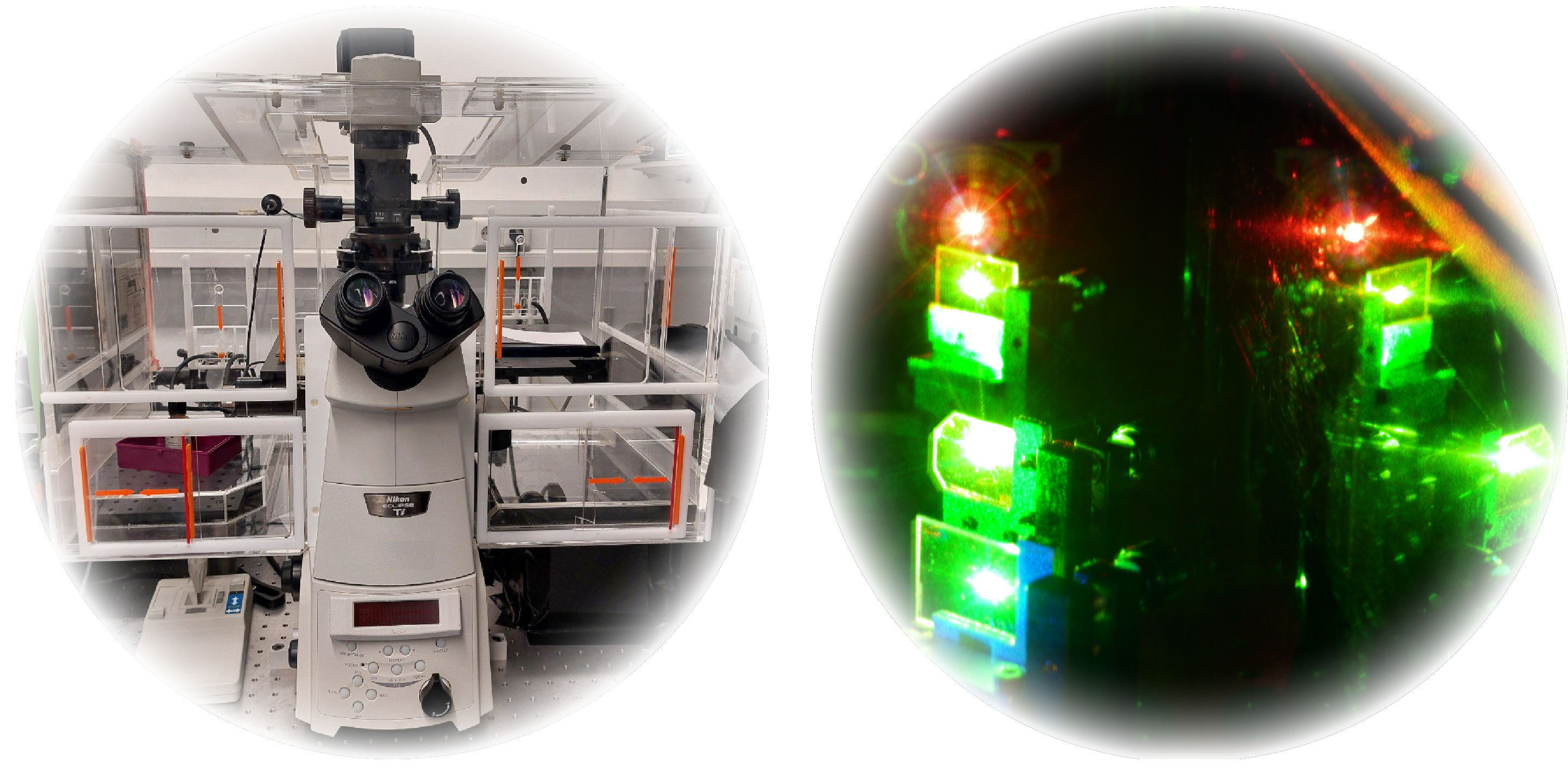Widefield/Total Internal Reflection Fluorescence (WF/TIRF) Microscopy
Our laboratory has several advanced WF/TIRF microscopy setups, each tailored for specific experimental needs. The systems are equipped with state-of-the-art components, high-powered lasers, and custom-built solutions, enabling cutting-edge research in live-cell imaging, single-molecule detection, and beyond.

Live-Cell Imaging and Tracking Applications
WF/TIRF setups are optimized for live-cell imaging and high-speed tracking applications, such as viral particle tracking. Our main system include:
- 6 laser diodes (445 nm, 488 nm, 514 nm, 561 nm, 594 nm, 642 nm).
- Andor DU-897 EMCCD cameras for multicolor imaging with up to 4 different dyes.
- Custom Labview software controlled via an FPGA unit for hardware synchronization and data acquisition.
- High-speed switching between widefield and TIRF excitation (up to 400 Hz) for dynamic imaging.
- Data streaming directly to SSDs, allowing dual-color TIRF imaging at ~33 ms per frame.
- A PECON incubation chamber for long-term live-cell imaging at 37°C and 5% CO₂.
- A motorized translation stage for automated serial measurements and positional tracking.
- Integrated perfect focus system to maintain z-focal stability during prolonged imaging.

Single-Molecule Imaging and smFRET Experiments
We have a further WF/TIRF setup specifically designed for single-molecule imaging and smFRET experiments. Key features include:
- 5 high-power lasers (491 nm, 532 nm, 561 nm, 640 nm, and 720 nm).
- Three cameras configured for simultaneous detection of multiple fluorescence signals.
- SmFRET measurements utilizing oTIRF (objective-based TIRF) and pTIRF (prism-based TIRF) techniques.
This setup serves for advanced biophysical research, such as probing molecular interactions, conformational changes, and energy transfer mechanisms with nanometer resolution.
Latest applications
Together, these setups are 'workhorses' in our lab enabling applications such as:
- Live-cell imaging of dynamic cellular processes.
- High-speed tracking of viral particles and other biomolecules.
- Single-molecule FRET (smFRET) measurements for studying molecular interactions.
- High-resolution imaging of structural and functional dynamics in biological systems.
